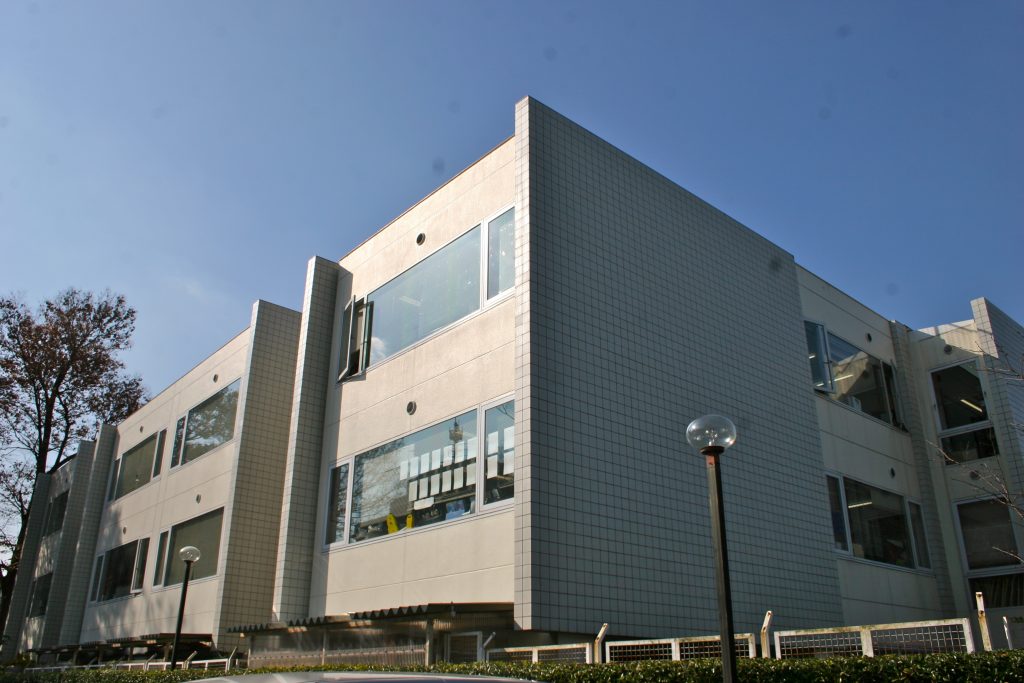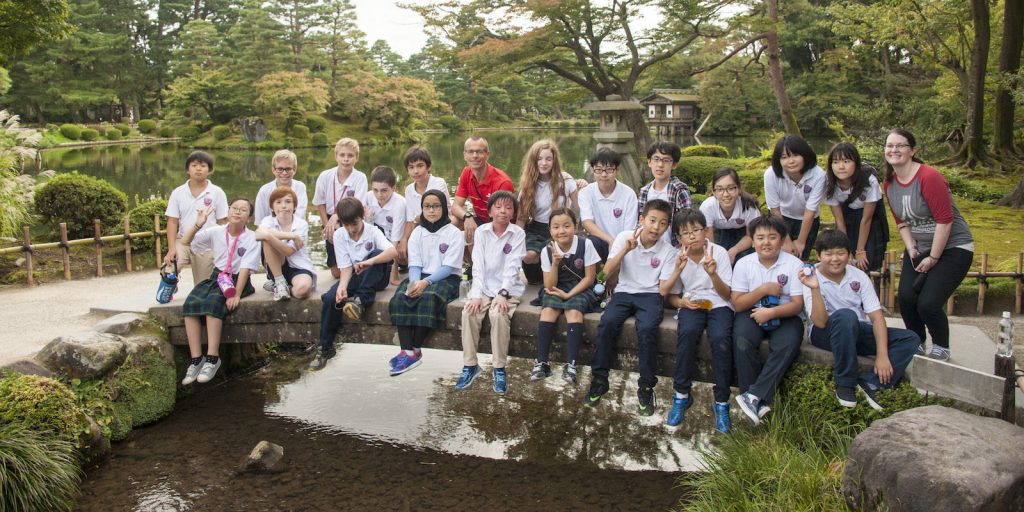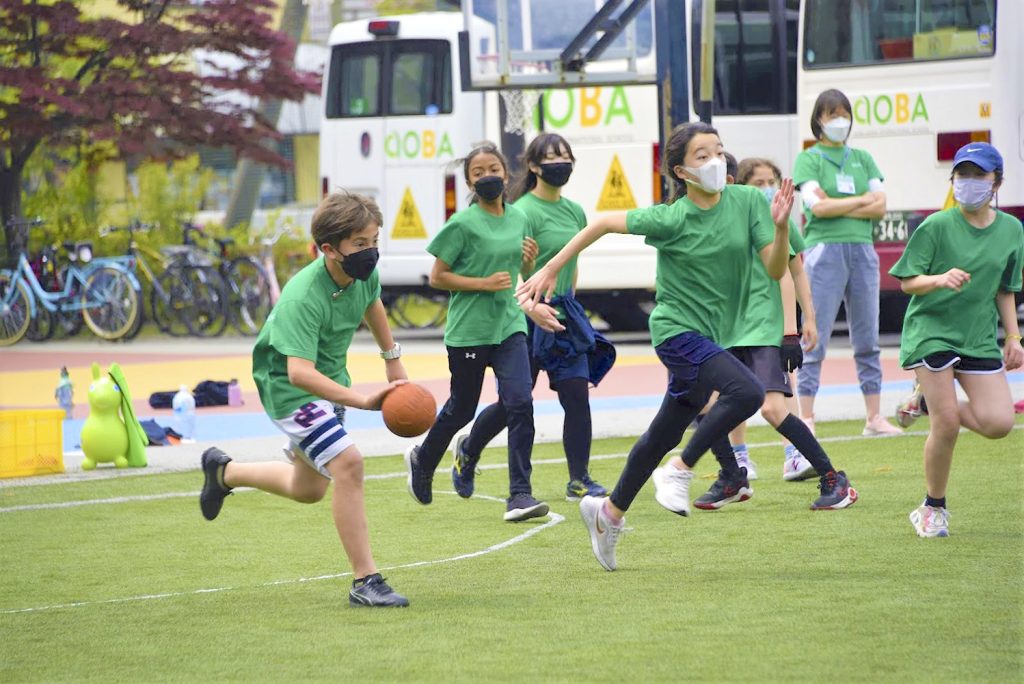Aoba Japan International School Review

Aoba International School was founded in 1976 in central Tokyo, and merged with Japan International School in 1998 to create Aoba Japan International School. In 2011 the school expanded from a K-9 school to a full K-12 school and in 2012 the school relocated to its present location in Hikarigaoka. Three years later the school became an IB World School, offering the International Baccalaureate Primary Years Program (K2 to grade 5), Middle Years Program (grade 6 to grade 10) and Diploma Program (grades 11 and 12), with English as the language of Primary Instruction
The Aoba group is affiliated with five preschools for children aged one to five in Tokyo. These include three bilingual preschools authorized by the International Baccalaureate, one international preschool that has been awarded candidacy status for the IB, and another, newer, bilingual preschool.

Admissions
Aoba Japan seeks to admit students who will succeed in the International Baccalaureate curriculum, and those who will benefit the most from the education that the school provides. These factors are typically determined through an evaluation of each applicant’s school records and teacher recommendations.
The school can accommodate students who require extra support learning English, particularly up until grade 9. On average, 30% of the students in each class from grade 1 to grade 9 will be receiving English as an Additional Language support to some degree. However, from grade 9 new admits to the school will need to be sufficiently proficient in English to to access the entire curriculum with no EAL support. While it is not required, it is strongly recommended that at least one parent be able to communicate comfortably with school personnel in English.
All applications to the school are reviewed by the Admissions Director and the Principal of the school section to which the student is applying. For applications to grades 11 and 12, the application will also be seen by the Diploma Program coordinator to ensure that each student will be able to satisfy the requirements of the diploma program. The standard application period is between November 1, 2020 and December 31, 2021, for the following school year, with interviews taking place in January. Applications continue to be accepted after this date on a rolling admissions basis depending on availability
Aoba Japan does not discriminate on the basis of nationality, race, or religion, and all students who meet the academic and behavioural expectations of our school are accepted. The school only denies a student when it believes that it is not in the best interest of the student to join Aoba and/or when it believes that the school is unable to serve the specific learning or behavioural needs of the student.

Education
Aoba-Japan is an International Baccalaureate (IB) Continuum School, providing the Primary Years Program (PYP), Middle Years Program (MYP), and Diploma Program (DP), to its students in Elementary, Middle, and High School respectively. The IB curriculum focuses on developing students into the leaders, entrepreneurs and innovators of tomorrow, by building communication, problem solving, and risk-taking skills.
In Kindergarten, children at Aoba-Japan develop social and physical skills through play in a range of outdoor and indoor activities. Children are exposed to a full range of subject areas and immersed through primarily hands-on activities. Crafts, music and art are introduced to spark creativity and abstract communication skills from an early age. After moving on to Elementary School, more emphasis is placed on the structure of the curriculum and the school follows the typical International Baccalaureate system of Units of Inquiry (UOIs). Concepts focus on helping young students interpret the world around them, and their place in it, and encourage critical thinking, disagreement, and discussion. You can learn more about the PYP by visiting the “Programmes” portion of the IB website, here.
Students in Middle School continue to practice the skills introduced in Elementary School, while beginning to develop independent learning techniques. Students study Language and Literature, Language Acquisition, Individuals and Societies, Global Leadership, Mathematics, Design, Arts, Sciences, and Physical Health Education, and also participate in self-designed courses (that students and teachers develop together).
In High School, Aoba Japan provides different options for students, allowing them to choose between the IB Diploma Programme (IBDP) and the Aoba Global Leadership Diploma (GLD) program.
Through the Diploma Program, students select six subjects, three at the Higher Level (HL) and three at the Standard Level (SL), to study alongside the core program requirement class, Theory of Knowledge. The six subjects must include at least two languages, a humanities subject, a science subject and mathematics. Students must also complete a service component and a 4,000 word independent research paper. Since the IB is an internationally recognized curriculum, universities and colleges may offer college credit to students who do sufficiently well in DP subjects, particularly at the Higher Level. At Aoba Japan, over 20 different DP courses are offered in a combination of face to face and virtual formats.
The other option for high schoolers at Aoba Japan is the Aoba Global Leadership Diploma (GLD) program. This program is designed to prepare independent learners capable of determining their own educational pathways, and is based on a set of principles that share a common approach with the IB Diploma Program: Global Leadership, Entrepreneurship and Innovation, Effective Communication, Wise Risk-Taking, and Effective Problem Solving.
Through the program, students are expected to develop their own unique curriculum pathway, taking into account their backgrounds and skills, interests in possible careers and entrepreneurship opportunities, and applicable future training centers and universities. Students are encouraged to work backwards from their goals, considering what is required from their time at Aoba Japan to gain entry to these programs and put the necessary steps and targets in place to ensure adequate and timely progress. Each GLD candidate must take responsibility for managing their time and coursework, making sure that all work, assessments, and products of inquiries are made available to a GLD blended learning teacher for assessment. Approximately ⅔ of the senior students are taking the DP course and ⅓ of them are taking the GLD course.
As a host school to students from many nations, cultures, and language backgrounds, Aoba operates a comprehensive English as an Additional Language program that supports students in being able to fully access the IB curriculum. Beginner EAL students in grades six through eight receive small-class support alongside their typical MYP classes. Students are taught according to the MYP Language Acquisition guide and are assessed against the related criteria by qualified teachers who have completed IB-sanctioned training. Aoba offers six levels of EAL support, and upon successful completion of phase 6 students enter the standard English Language & Literature course. The EAL program at Aoba typically improves students’ English proficiency by over one full point on average (on a five-stage scale), a large degree of progress from a single year of instruction.
For non-native students who want to learn Japanese, Aoba offers both Japanese as an Additional Language (JAL) and Japanese Language Acquisition (JLA) classes, aiming to develop the skills necessary for further language learning and enable learners to participate more fully in the local community. Both programs are designed with an emphasis on developing both linguistic and cultural awareness, and integrate the customs of Japan into the teaching of the Japanese language.
Every student who is not fluent in Japanese studies the language to some degree during their time at the school. In Middle School, students move through a series of six phases within the IB Japanese Language Acquisition (JLA) program over the five years of the program. In this way they are able to engage with the community and take advantage of our DP courses in literature or language and literature.

Leadership, Extracurriculars and Sports
Most extracurricular activities at Aoba fall under the After School Program (ASP) that runs every weekday after school from 15:30 to 16:45. Each year, a booklet is published that outlines the schedule and the available extracurricular activities offered that year. Many ASP offerings listed relate to sport, music, or the arts, but other activities include street dance, classical ballet, youth theatre and coding.
Aoba-Japan offers many options for the performing arts, both during the school day and extra-curricular. Joining a performing music ensemble elective is compulsory at the middle school level and a popular course offering at the high school, while the Beginning Band, from 4th grade onwards, allows students to get one-to-one and ensemble instruction on the instrument of their choice. In addition to Beginning Band, musical extracurricular ensembles include the Hand Bell Choir, the Jazz Ensemble, the Advanced Elementary Band, and Group/Private instrumental education for all ages.
With regard to the visual arts, students at the school can explore drawing, painting, sculpture, printmaking, mixed media, art history, graphic design, CI design, photography, collage, illustration, editorial design and poster design. Emphasis is placed on using multiple forms of art media including computers, and students have many opportunities to take field trips to museums and galleries, to meet with artists and to participate in art competitions.
The Aoba Jaguars program is a competitive athletic program that enriches the student experience at the school and enables students to develop teamwork, individual skills and positive self-esteem. Sports typically offered include football, volleyball, running club, and basketball.

Outcomes
College counselling at Aoba operates in tandem with the school’s philosophy of encouraging independence and planning on the part of the student to understand the requirements needed to meet their goals. The school hosts at least one visit by university admissions staff to Aoba per month from schools around the world, with representatives from top schools in Europe, Canada, the USA, Japan and Australia visiting every year. Students at Aoba are also heavily encouraged to attend regional post-secondary education fairs to meet with university representatives first hand.
In the most recent admissions cycle, students went on to study at some of the most prestigious universities around the globe, including:
- Sophia University, Japan
- Temple University, Japan
- Waseda University, Japan
- Carnegie Mellon University, USA
- Syracuse University, USA
- University of California, Davis, USA
- University of Denver, USA
- University of British Columbia, Canada
- Durham University, UK
- Imperial College London, UK
- University College London, UK
- Saint Andrew’s University, UK
- Australian National University, Australia
- University of Sydney, Australia
- Hong Kong Technical University, China
- Southern University of Science and Technology, China
The information in this report comes from the experiences of Aoba Japan students, the expertise of Tokyo Academics educators who work with students from Aoba Japan on a regular basis, The Good Schools Guide International and Aoba Japan webpage.
Looking for More International School Guidance?
Visit our Resource Center and gain access to recorded webinars, podcast episodes, school profiles, and more.
